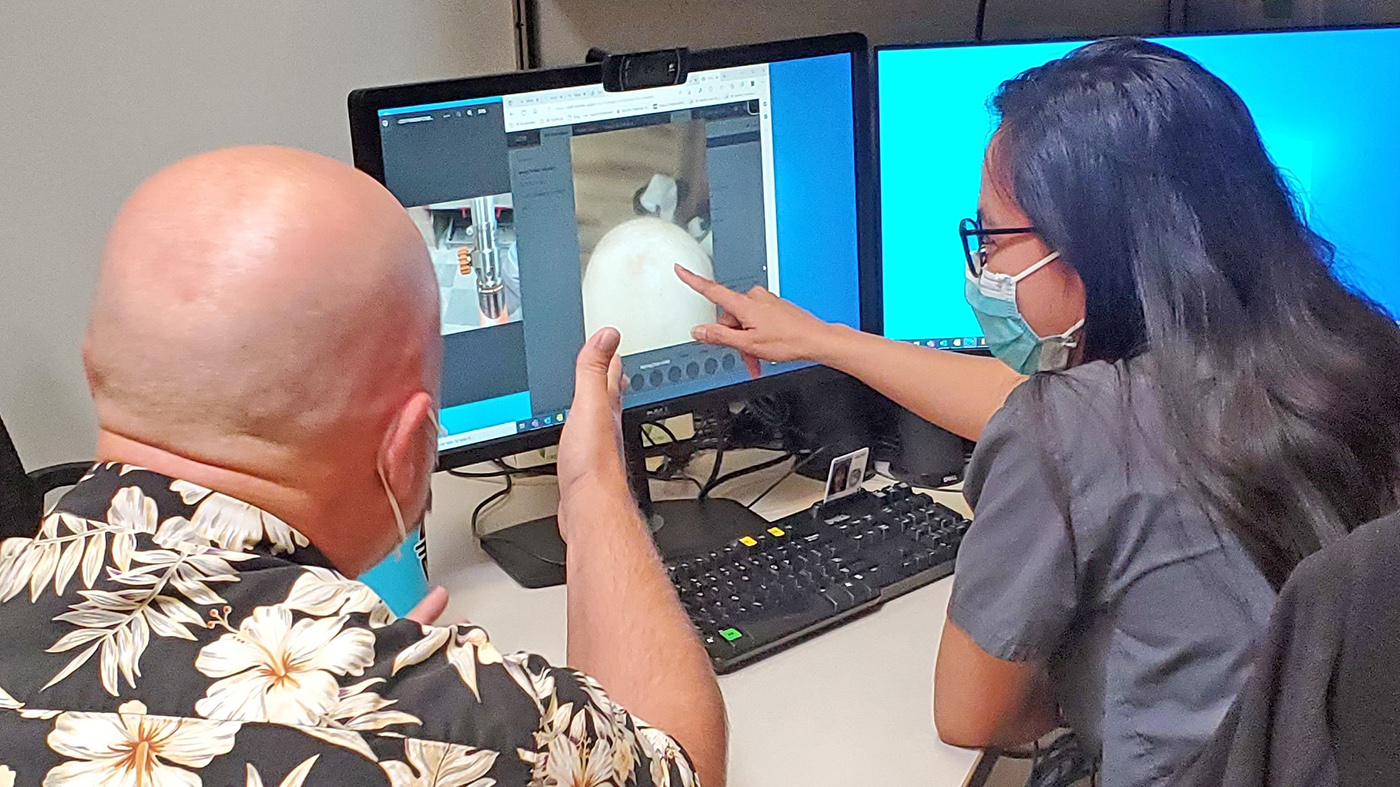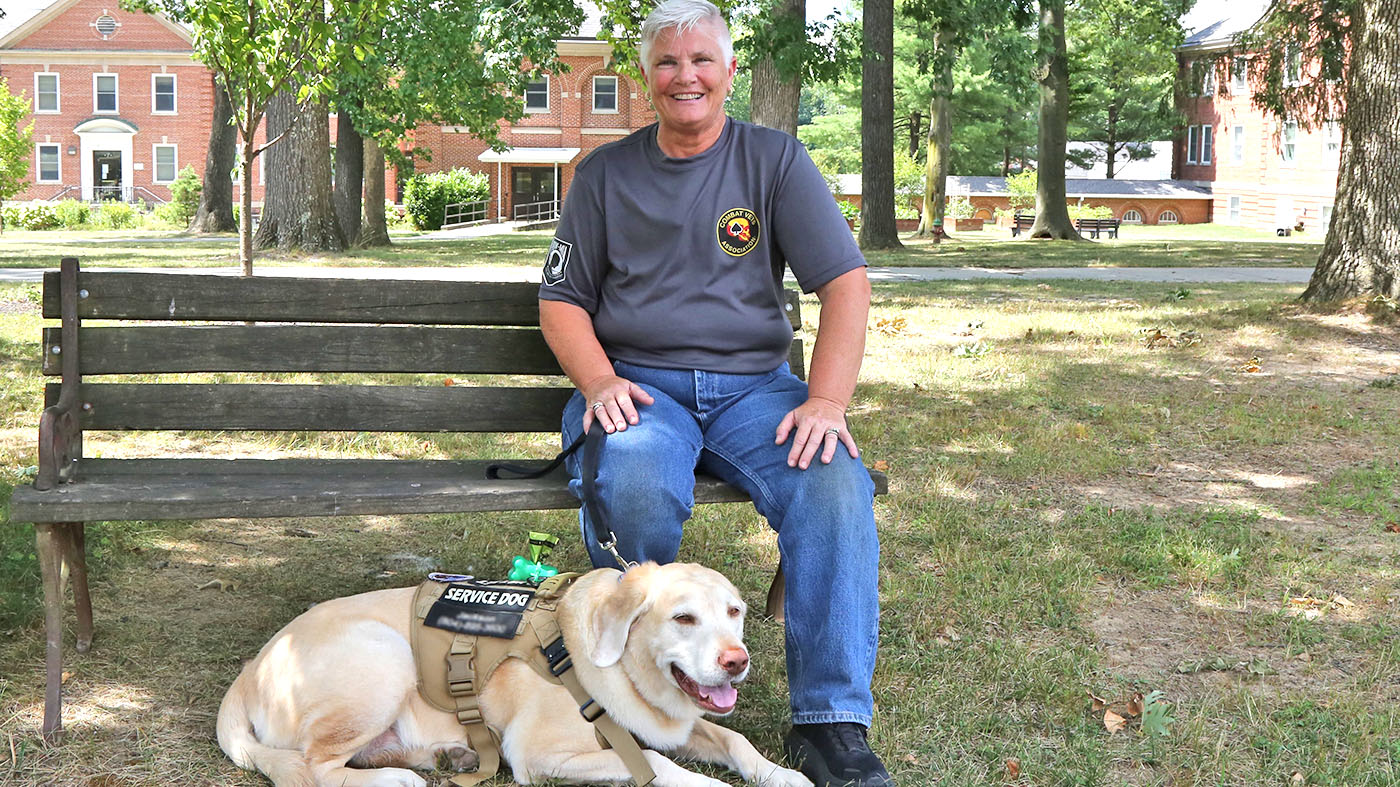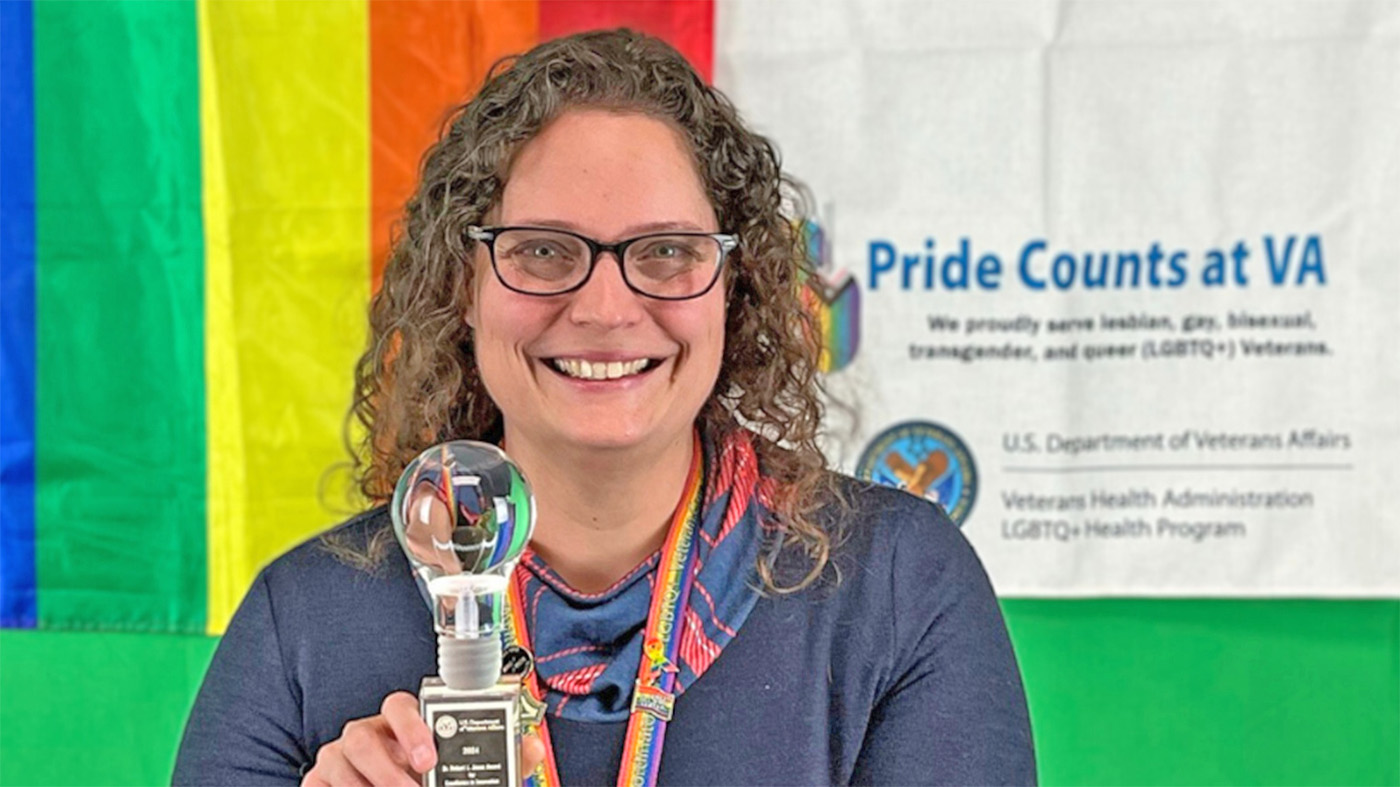The Southern Arizona VA Amputee Clinic is using the My VA Images app to provide more convenient and accessible care to Veterans receiving its services.
The clinic’s amputee team has been using My VA Images since its release in 2021. Recently, the team has found that the app can also be used as an alternative or in addition to video telehealth visits.
My VA Images is a web app that enables Veterans to securely send photos or videos to their VA provider at the provider’s request. The app can be accessed on a smartphone, tablet or computer. After sending the photos or videos, Veterans receive clinical feedback from their provider without an appointment.
Reaching Veterans when video visits aren’t an option
The Amputee Clinic recently used My VA Images to examine a Veteran’s wound when their scheduled video visit had connectivity issues. “Without My VA Images, we would still be trying to figure out how to get a visual on the wound he had,” said Tim Cook, amputation rehabilitation coordinator at the clinic.
The Veteran lived over 200 miles from the facility’s main campus and didn’t have access to reliable transportation. His VA care team knew he wouldn’t be able to attend an in-person appointment. “In this case, My VA Images was exactly what we needed,” Cook said.
Through the app, the Veteran shared images of the wound with his provider. The amputee team then uploaded images to the Veteran’s medical record which makes them accessible to other specialties. Cook said this is one of the most useful components of the app.
The team shared the images with a local wound care specialist. The specialist was then able to access the images in the Veteran’s medical record, view the images and provide recommendations to the amputee team. The Veteran received a treatment plan that day.
Pictured above, Cook and a VA provider review an image of a Veteran’s residual limb submitted through the My VA Images app.
Making care easier for Veterans and providers
Telehealth options help Veterans receiving amputation services avoid challenges to receiving in-person VA care. “Mobility is a challenge for these Veterans. And many of them don’t live near a health care clinic. Telehealth gives us an opportunity to see the patient, interact with them and have a window into their home environment.”
The amputee clinic has used VA telehealth to help Veterans with mobility challenges in many ways. They can advise on how to fix ramps, remove obstacles in the home, adjust prosthetics, order new equipment and more.
And VA telehealth doesn’t just decrease the need for Veterans to travel to a clinic. Cook noted that with asynchronous VA telehealth apps such as My VA Images, Veterans don’t need to wait for an in-person appointment.
“My VA Images makes the care process happen faster because we don’t have to set up a time and coordinate the full team. I saw early on how it could really help us out in those moments when we need a picture but can’t coordinate bringing the Veteran into the facility or scheduling the doctor at the right time.”
Knowing the impact VA telehealth has on Veterans receiving amputee services, Cook and his team have been strong proponents of it for years. At their clinic, around a third of the Veterans with acute conditions receiving amputee services use VA Video Connect, VA’s secure video conferencing telehealth application to receive care. And the number of Veterans using asynchronous VA telehealth apps like My VA Images continues to grow.
To learn more visit the My VA Images page.
Topics in this story
More Stories
Combat Veteran faces the traumatic events of her PTSD during prolonged exposure therapy and looks forward to the days to come.
Bob Jesse Award celebrates the achievements of a VA employee and a team or department that exemplifies innovative practices within VA.
The Medical Foster Home program offers Veterans an alternative to nursing homes.






